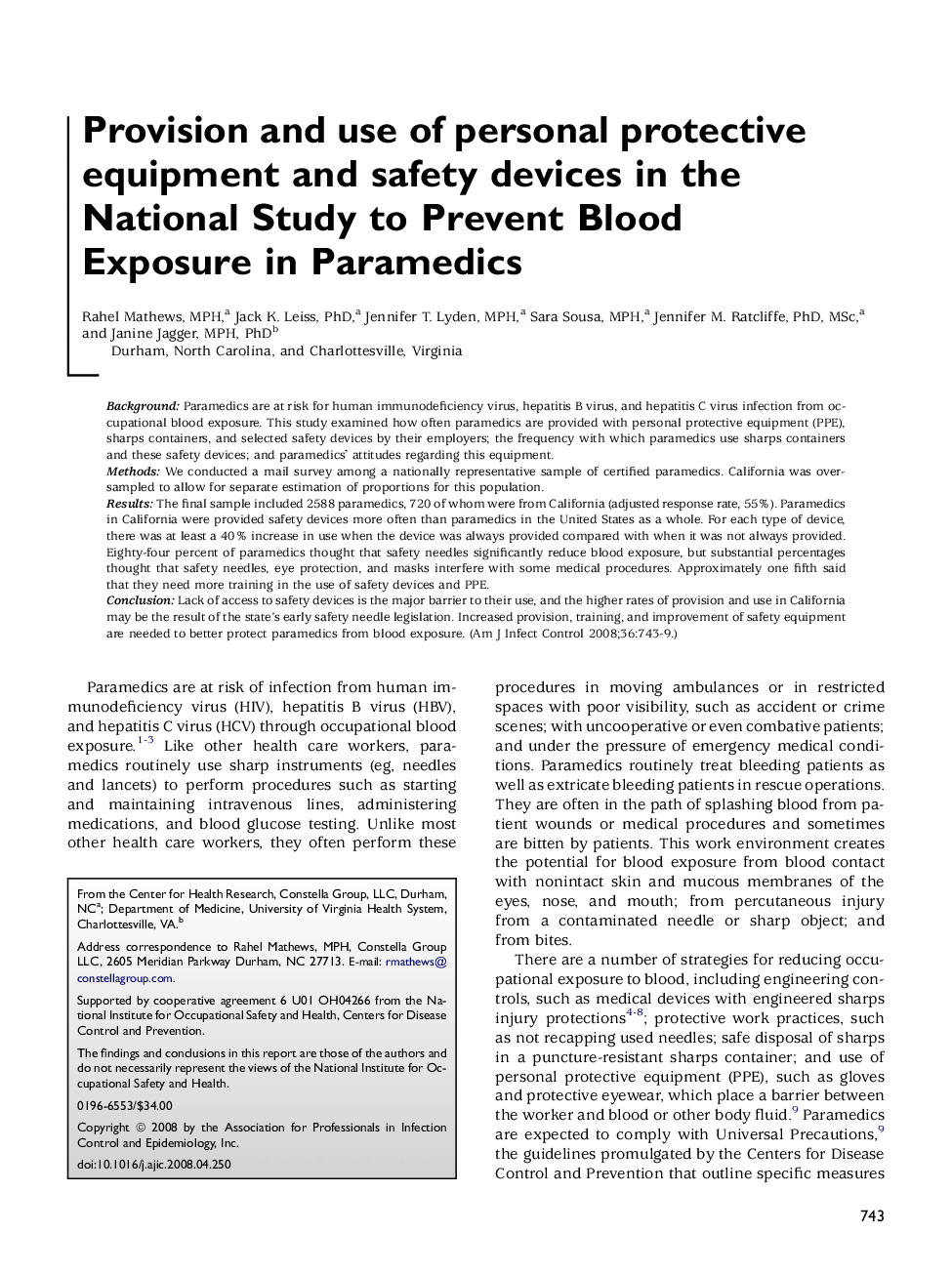| کد مقاله | کد نشریه | سال انتشار | مقاله انگلیسی | نسخه تمام متن |
|---|---|---|---|---|
| 2638826 | 1563550 | 2008 | 7 صفحه PDF | دانلود رایگان |

BackgroundParamedics are at risk for human immunodeficiency virus, hepatitis B virus, and hepatitis C virus infection from occupational blood exposure. This study examined how often paramedics are provided with personal protective equipment (PPE), sharps containers, and selected safety devices by their employers; the frequency with which paramedics use sharps containers and these safety devices; and paramedics’ attitudes regarding this equipment.MethodsWe conducted a mail survey among a nationally representative sample of certified paramedics. California was oversampled to allow for separate estimation of proportions for this population.ResultsThe final sample included 2588 paramedics, 720 of whom were from California (adjusted response rate, 55%). Paramedics in California were provided safety devices more often than paramedics in the United States as a whole. For each type of device, there was at least a 40% increase in use when the device was always provided compared with when it was not always provided. Eighty-four percent of paramedics thought that safety needles significantly reduce blood exposure, but substantial percentages thought that safety needles, eye protection, and masks interfere with some medical procedures. Approximately one fifth said that they need more training in the use of safety devices and PPE.ConclusionLack of access to safety devices is the major barrier to their use, and the higher rates of provision and use in California may be the result of the state's early safety needle legislation. Increased provision, training, and improvement of safety equipment are needed to better protect paramedics from blood exposure.
Journal: American Journal of Infection Control - Volume 36, Issue 10, December 2008, Pages 743–749